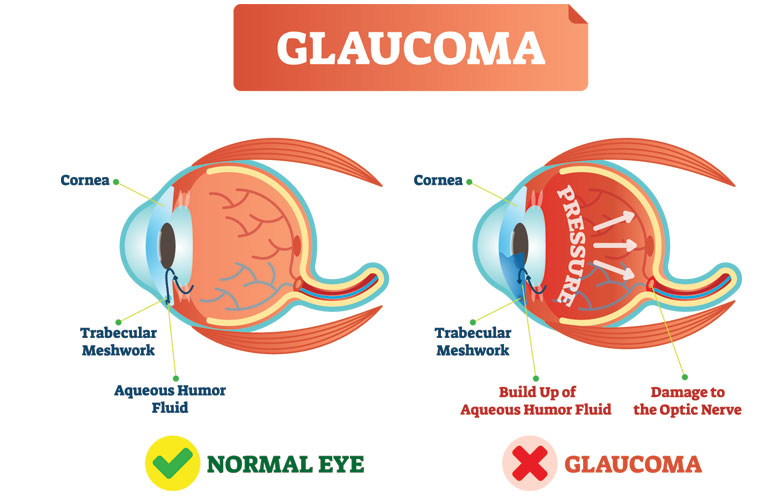25 Jun, 2021 | Bradley Naidoo | No Comments
Glaucoma, the silent thief of sight

Have you ever put off an eye exam because your eyesight “seems fine”? Maybe you’ve never worried about diseases like Glaucoma because “I’m too young”? Well….This is where you may be wrong, Glaucoma is one of the leading causes of blindness in the world. In the early stages, it usually has no symptoms. Yet it is essential to catch glaucoma at this stage for the best chance of successful treatment. Glaucoma can strike as early as the age of 40. Glaucoma is a group of eye conditions that causes damage to the optic nerve. This damage is often caused by an abnormally high pressure in your eye. It can occur at any age but is more common in older adults. Many forms of Glaucoma have no warning signs. The effect is so gradual that you may not notice a change in vision until the condition is at an advanced stage.

We at PureSight Ophthalmology specialize in Glaucoma diagnosis and treatment; today we will take an in-depth look at Open-angle glaucoma as it is the most common form of the disease.
OPEN-ANGLE GLAUCOMA
Occurs when the drainage angle formed by the cornea and iris remains open, but the trabecular meshwork is partially blocked. This causes pressure in the eye to gradually increase. This pressure damages the optic nerve. It happens so slowly that you may lose vision before you’re even aware of a problem. The signs and symptoms of glaucoma vary depending on the type and stage of your condition hence the nick name of the silent thief of sight
WHO’S MOST LIKELY TO GET IT?
Your chances go up based on the following factors, Age – Your risk rises as you get older. Family history -You’re more likely to get it if other family members have it. If you have a family history of glaucoma, you should see an ophthalmologist yearly even if you do not have any symptoms. Some other conditions also raise your odds such as Diabetes, a thin cornea, high blood pressure and Near-sightedness
SYMPTOMS & TREATMENT
What Are the Symptoms? There aren’t any for quite some time and therefore regular eye exams are always recommended. Early on, you start to lose peripheral vision, the stuff you see out the side of your eyes. You may not notice it’s happening. Later, you might miss a stair while you walk or notice letters missing from words when you read. You might also have some close calls when you drive.
Open-angle Glaucoma symptoms include: Patchy blind spots in your side (peripheral) or central vision, frequently in both eyes Tunnel vision in the advanced stages

Whilst other forms of Glaucoma such as Acute angle-closure Glaucoma, you would experience the following symptoms: Severe headache; Eye pain; Nausea and vomiting; Blurred vision; Halos around lights and Eye redness.
TREATMENT OF GLAUCOMA
The damage caused to the optic nerve is irreversible and so is the vision loss or problems that follow, but you can slow Glaucoma’s progress. You do that by lowering the pressure in your eye, even if it seems normal. Generally, the more damage you have, the lower you want the pressure. Treatment for Glaucoma can be medical or surgical. Medical treatment involves the instillation of drops or tablets to reduce fluid production or increase fluid drainage. In many cases, laser therapy is indicated which, together with drops, may provide a longer period of controlled eye pressure.
GLAUCOMA SURGERY
Surgery involves the creation or implantation of a valve to control the pressure in the eye. The type of surgery your doctor recommends will depend on the type and severity of your Glaucoma and the general health of your eye. Surgery can help lower pressure when medication is insufficient. However, it cannot reverse vision loss
